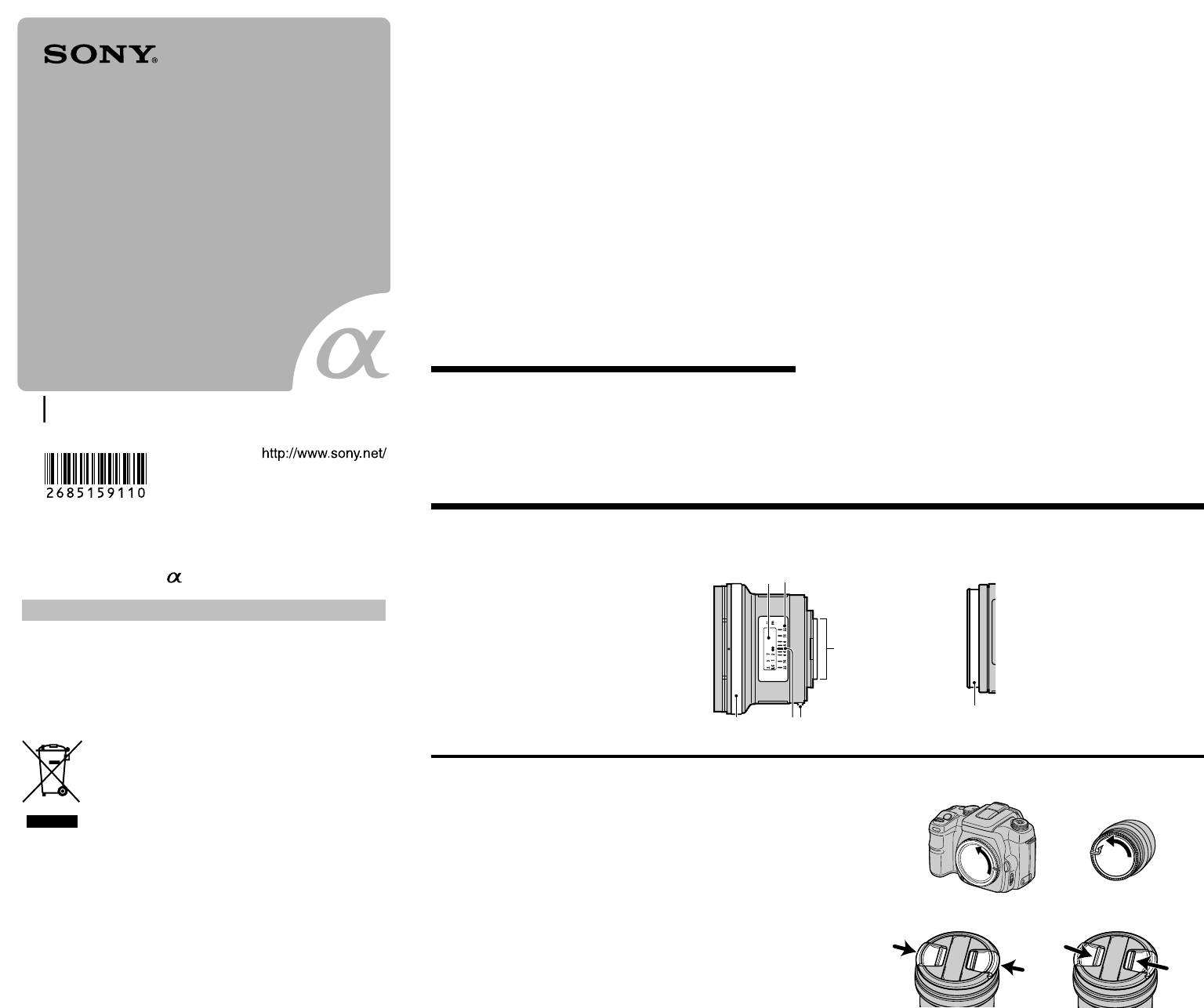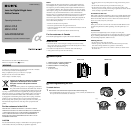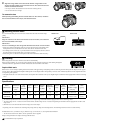
(1) (2)
1···Distance scale 2···Depth-of-field scale
3···Lens contacts 4···Mounting index
5···Distance index 6···Focusing ring
7···Lens hood*
* For 28mm F2.8 only
20mm F2.8: 28mm F2.8:
7
1
2
3
4
6 5
This manual is for use with several different lenses.
This lens is designed for Sony cameras.
WARNING
To reduce fire or shock hazard, do not expose the unit to rain or moisture.
Do not directly look at the sun through this lens.
Doing so might harm your eyes or cause loss of eyesight.
Keep the lens out of reach of small children.
There is danger of accident or injury.
Disposal of Old Electrical & Electronic Equipment
(Applicable in the European Union and other
European countries with separate collection
systems)
This symbol on the product or on its packaging indicates that
this product shall not be treated as household waste. Instead it
shall be handed over to the applicable collection point for the
recycling of electrical and electronic equipment. By ensuring this product is
disposed of correctly, you will help prevent potential negative consequences
for the environment and human health, which could otherwise be caused
by inappropriate waste handling of this product. The recycling of materials
will help to conserve natural resources. For more detailed information
about recycling of this product, please contact your local Civic Office, your
household waste disposal service or the shop where you purchased the
product.
For the customers in the U.S.A.
THIS DEVICE COMPLIES WITH PART 15 OF THE FCC RULES.
OPERATION IS SUBJECT TO THE FOLLOWING TWO CONDITIONS:
(1) THIS DEVICE MAY NOT CAUSE HARMFUL INTERFERENCE,
AND (2) THIS DEVICE MUST ACCEPT ANY INTERFERENCE
RECEIVED, INCLUDING INTERFERENCE THAT MAY CAUSE
UNDESIRED OPERATION.
CAUTION
You are cautioned that any changes or modifications not expressly approved
in this manual could void your authority to operate this equipment.
NOTE:
This equipment has been tested and found to comply with the limits for a
Class B digital device, pursuant to Part 15 of the FCC Rules. These limits
are designed to provide reasonable protection against harmful interference
in a residential installation. This equipment generates, uses, and can radiate
radio frequency energy and, if not installed and used in accordance with the
instructions, may cause harmful interference to radio communications.
However, there is no guarantee that interference will not occur in a particular
installation. If this equipment does cause harmful interference to radio or
television reception, which can be determined by turning the equipment off
and on, the user is encouraged to try to correct the interference by one or
more of the following measures:
– Reorient or relocate the receiving antenna.
– Increase the separation between the equipment and receiver.
– Connect the equipment into an outlet on a circuit different from that to which the
receiver is connected.
– Consult the dealer or an experienced radio/TV technician for help.
For the customers in Canada
This Class B digital apparatus complies with Canadian ICES-003.
Notes on use
• Do not leave the lens in direct sunlight. If sunlight is focused onto a nearby
object, it may cause a fire. If circumstances necessitate leaving the lens in direct
sunlight, be sure to attach the lens cap.
• Be careful not to subject the lens to mechanical shock while attaching it.
• Always place the lens caps on the lens when storing.
Names of parts
©2006 Sony Corporation Printed in Japan
SAL20F28/28F28
Lens for Digital Single Lens
Reflex Camera
Operating Instructions
20mm F2.8
28mm F2.8
2-685-159-11(1)
• Do not keep the lens in a very humid place for a long period of time to prevent
mold.
• Do not hold the camera by the lens part extended for focusing, etc.
• Do not touch the lens contacts. If dirt, etc., gets on the lens contacts, it may
interfere or prevent the sending and receiving of signals between the lens and the
camera, resulting in operational malfunction.
Precaution for flash use
With certain of lens/flash combinations, the lens may partially block the light
of the flash, resulting in a shadow at the bottom of the picture. When using a
built-in camera flash, make sure to remove the lens hood and shoot from at
least 1 m (3.3 feet) away from your subject.
Vignetting
When you use lens, the corners of the screen become darker than the center.
To reduce this phenomena (called vignetting), close the aperture by 1 to 2
stops.
Condensation
If your lens is brought directly from a cold place to a warm place,
condensation may appear on the lens. To avoid this, place the lens in a plastic
bag or something similar. When the air temperature inside the bag reaches
the surrounding temperature, take the lens out.
Cleaning the lens
• Do not touch the surface of the lens directly.
• If the lens gets dirty, brush off dust with a lens blower and wipe with a soft,
clean cloth (Cleaning Cloth KK-CA (optional) is recommended).
• Do not use any organic solvent, such as thinner or benzine, to clean the lens or
the camera cone.
Attaching/detaching the lens
To attach the lens
1 Remove the rear and front lens caps and the camera body cap.
• You can attach/detach the front lens cap in two ways, (1) and (2). When you attach/detach the
lens cap with the lens hood attached, use method (2).




